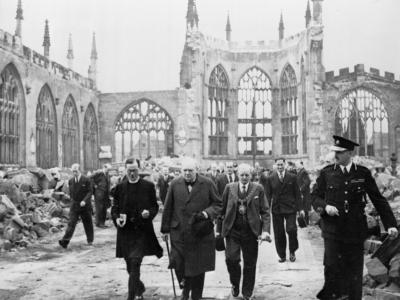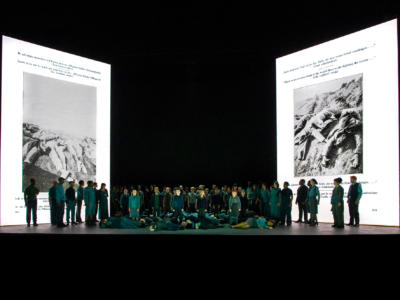Wolfgang Tillmans: War by Design
An interview with War Requiem designer Wolfgang Tillmans.
This autumn ENO marks the centenary of the end of the First World War with a full staging of Benjamin Britten’s choral work War Requiem for the first time. ENO’s Chorus will be joined by the Ensemble from Porgy and Bess, alongside a choir of 40 children from Finchley Children’s Music Group.
ENO Music Director Martyn Brabbins conducts and the three Principal singers are Emma Bell, David Butt Philip and Roderick Williams. ENO Artistic Director Daniel Kramer collaborates with the Turner Prize-winning Artist and Designer Wolfgang Tillmans on this new production, continuing ENO’s history of forging collaborations across art forms. Stephanie Cartwright caught up with Wolfgang to find out more about his approach to designing this new production.
How did you get involved with War Requiem? Who approached who? And how has this creative collaboration worked?
I was introduced to the idea by our mutual friend Norman Rosenthal – he got the two of us together. The collaboration was carried by a willingness to take on board each other’s input on all fronts. Daniel welcomed some ideas I had that were to do with people movements and actions, which would technically not be part of my role. He was very generous and I particularly enjoyed the early stages when we really decided what should and what shouldn’t happen on stage. How symbolic or how abstract this should be, given that Britten never gave any instructions nor envisaged War Requiem being staged in an opera format.
Video
Everyone knows you as a photographer and for winning the Turner Prize in 2000, but how different is it creating for a theatrical stage compared to an exhibition?
I approach gallery spaces as overall installations; every picture that is in a room plays off each other and is a colour value, a tone, and has weight. Together they make an overall experience. From that spatial background, I also approach this project. Daniel described my role as being responsible for everything one sees. That includes the costumes, which I have asked my friend Nasir Mazhar to design in dialogue with myself and Daniel.
Given how your photography will be incorporated in the production, do you see it more as an installation piece or an immersive performance?
It is closely linked to the music and lyrics and definitely part of the performance, instead of being a static installation that is the backdrop to act in front of.
What other mediums apart from photography are you using to create the stage design? What can our audience expect from you as a stage designer?
I approached my work initially from the words that are being sung. I read the lines one by one and some are so powerful, some so solemnly poetic that I had the idea to amplify them as text projections. Another decision was to have as few props as possible. To counter that dramatically there is one scene with a large sculptural object I made surrounded by masses of debris. A lot of consideration also went into the colour pallet and historical non-positioning of the costumes.
Has your experience of being a musician, helped you to adapt to this art form?
Music has been important to me all my life. In particular the love of the human voice. I admire singers, they carry their medium inside them. I hope my work will help make the singers performance the centre of attention.

The themes of War Requiem involve loss, war and the repetitive cycle of the two. Have you drawn on personal experience to help bring this music to life?
The World War I poems by Wilfred Owen, which form part of the lyrics, reminded me of what war largely is: the destruction of young lives. Modern warfare since then added civilian victims of all ages. Having been a teenager in Germany in the 1980s, on the fault line between NATO and Warsaw Pact states, I had a terrible fear of war. The current rise of nationalism around the northern hemisphere makes the pacifist message of Britten and Owen more relevant than ever.
Britten’s piece was written and first performed in 1962 for the inauguration of the new Cathedral, built next to the ruins of the old Cathedral, which were left as a lasting memorial. Did you visit Coventry Cathedral in preparation for your work on War Requiem?
Yes, I went twice. Once with the ENO team. A second time I went on my own and made pictures and a film sequence that feature strongly in the stage design. What is so powerful is the sense of forgiveness and reconciliation. The wish to break the cycle of war and revenge has become synonymous with Coventry Cathedral. I highly recommend a visit.


